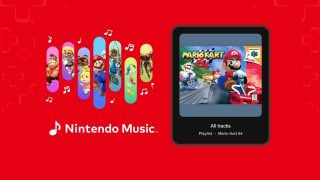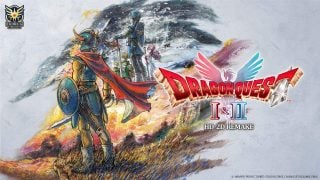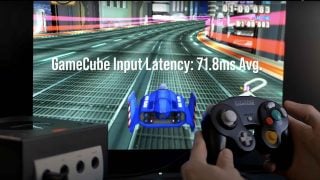Welcome back to the Smash Seminar! In this series I’ll be introducing readers to the world of competitive Smash through articles on history, characters, players and more, in the hopes of getting more people involved in the competitive scene. Whether you wish to be a casual observer or a future champ, I hope this series offers a good way to get a grasp on what makes professional Smash so special.
Last time, we covered the history of competitive Smash. It took quite a while, but hopefully we were able to cover a significant amount of ground in that time. This time, we’ll be getting into the nitty-gritty of it by delving straight into Melee’s metagame.
For those not in the know, the metagame (or meta for short) is defined as “any strategy, action or method used in a game which transcends a prescribed ruleset, uses external factors to affect the game, or goes beyond the supposed limits or environment set by the game.” In more simple terms, you can think of it as “the game beyond the game,” or decisions and strategies utilized outside of the scope of a single match. For the purposes of this article, we’re using the metagame to describe three aspects of what makes competitive Melee tick: the ruleset, the stages and the characters.
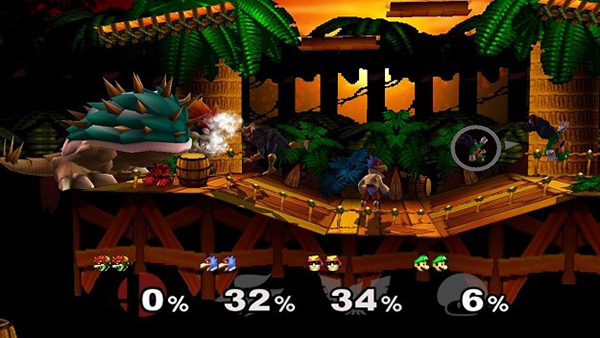
Part 1: Ruleset
As opposed to Smash 4, which is much newer and still trying to iron out certain aspects of its rules, the rules for Melee have been firmly established by this point in time. While there are still occasional disputes over particular points, most Melee tournaments follow this set of rules:
- Games are set to 4 stocks with an 8-minute timer. If time runs out, whoever has more stocks/less percent is the winner (in the rare case of a complete tie, the game is replayed).
- Sets are usually played best-of-3 for the first stages of the tournament, becoming best-of-5 in later rounds (when exactly it becomes best-of-5 depends on the tournament).
- Tournaments are double elimination, so once you lose in winner’s bracket, you move to loser’s and have continued chances to play. Lose there and you’re out.
- No items.
- Stages are picked from a certain list (shown below). Initial stages are picked via stage striking, randomization, or both. After the first game, stages are then counterpicked by the loser of the previous round.
- After the loser picks the stage, the winner picks his character, and then the loser picks his character.
- In a match, certain glitches, such as the Freeze glitch and Soul Breaker glitch, are banned. Some are contested (mostly Wobbling, which we’ll talk about momentarily).
- Stalling techniques (Rising Pound, Peach Bomber and Luigi Ladder) are banned. The former two can be used to recover, but not to stall.
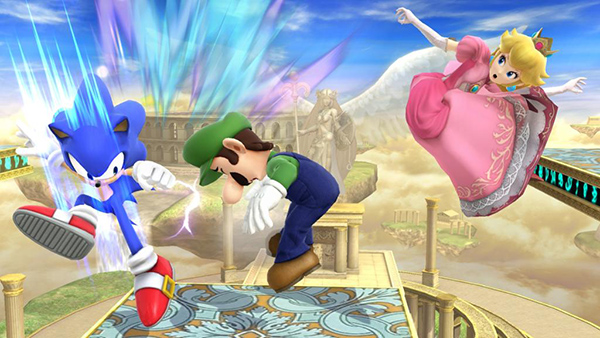
While that’s a lot to parse through, just keep in mind the big points for now: the format and settings of the matches. That’s what will be most important to a casual viewing experience, alongside understanding counterpicks.
While there have been several ruleset disputes in the past (and some still crop up today), these are the most common rules for Smash tourneys out there.
Part 2: Stages
The old “no items, Fox only, Final Destination” meme tends to portray competitive Smashers as having a rather stringent stage list.
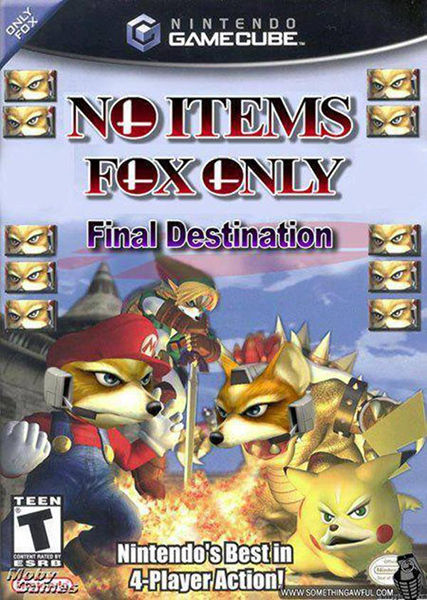
While it isn’t as limited as some other games (Smash 64, for example, often only has Dream Land as a legal stage), the array is rather abridged. Let’s take a quick look at all the legal stages, shall we?
Battlefield
Often considered the most neutral and balanced stage (and thus usually the first stage players strike to), Battlefield has been a favorite for many years. A simple layout (three platforms with no muss or fuss) allows for balance between all characters with little matchup advantage one way or the other.
Final Destination
While generally thought of as the most tournament-viable stage by casuals, FD does provide certain advantages to particular characters. Its large size and lack of platforms are quite beneficial to both characters with projectiles and those that can chain grab. Even so, there’s no strategy that’s completely unwinnable here.
Fountain of Dreams
While quite similar in layout to Battlefield, FoD provides a couple of crucial differences. The side platforms move up and down (preventing camping), the pillar underneath the stage allows certain characters to recover more easily and the shorter field makes for a tighter experience (which is banned in doubles). Games here tend to be fast and fluid.
Yoshi’s Story
Not to be confused with Yoshi’s Island, this stage also has a triangular, three-platform arrangement. The main elements that set it apart from Battlefield and FoD are the Shy Guys, who can interrupt certain attacks they get in your way, and the cloud that occasionally saves passerbys, known by the name “Randall.” Both are slight elements of unpredictability, but not obtrusive enough to cause the stage to be banned.
Dream Land N64
Returning from Smash 64, Dream Land is the largest legal stage used. Its wide breadth and huge blast zones make it great for so called “floaty” characters (Peach, Jigglypuff and Samus, for example), as it helps them survive longer and control stage presence. Matches tend to last a bit longer here. While Whispy Woods in the background does provide a small obstacle in the way of wind, it rarely affects anything in a match.
Pokémon Stadium
The only stage that is a counterpick instead of a starter (that is, it cannot be the first one chosen in a set), Pokémon Stadium is most notable for its shifting terrain and different modes: Neutral, Grass, Fire, Water, and Rock. While none of these transformations are devastating enough to threaten the stage’s legality, there are significant advantages given to both Fox and Falco (who can use their Blaster very safely and KO off the top quite early) — enough so that the stage is not a starter (except in doubles).
All other stages are banned (though in doubles, Kongo Jungle 64 is a counterpick), usually due to hazards that take too much attention away from the match and focus it more towards dodging obstacles. Other times, it’s because the stage itself has an odd or intrusive design that makes it easy to run away.
Part 3: Characters
Melee has 26 characters in total – over twice as many as the previous game. Despite this, much of the cast won’t see high-level tournament play due to the fact that some characters simply don’t have the tools necessary to compete with others; such is the balance of the game. Fortunately, despite the dominance of the top quarter or so of the cast, it’s still possible for low-tier heroes to emerge, such as with Masaya “aMSa” Chikamoto’s Yoshi.
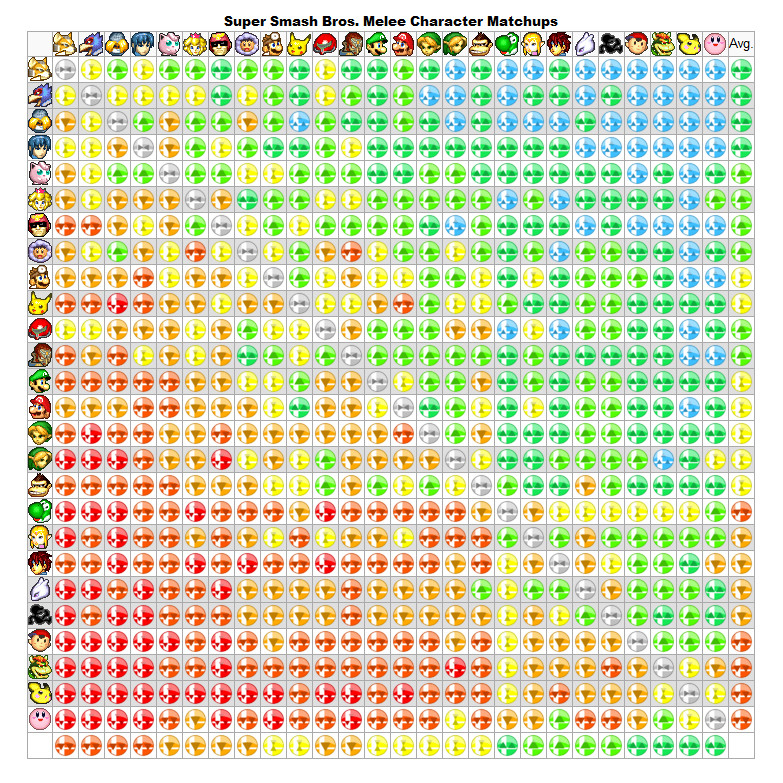
While there is some dispute as to which characters are better overall, and who wins what matchups, I’ll be going by the above chart, which represents the common thought on character matchups and tier-listing. For brevity’s sake, we’ll only be covering the top 8 characters, with a brief note on those immediately below. Let’s begin, shall we?
1. Fox
Notable players: Armada, Mang0, Leffen
Widely considered the best character in the game, Fox is a fighter with many tools at his disposal. His Blaster can rack up quick and easy laser damage from across the stage, he has great recovery options and his speed and strength are both near the top of the class. What makes Fox really good, however, is his down-B move: the Reflector, commonly known as the Shine. The quickest move in the game, it can also be used to spike opponents off stage and combo foes on stage in what is known as a “waveshine,” and it’s very easy to combo off of. Fox has no bad match-ups, and while he requires a lot of techskill to get good with, his dominance cannot be questioned, and many more Foxes pop up in high level tournaments than any other character.
2. Falco
Notable players: PPMD, Westballz, Mang0
As a “clone character” of Fox, Falco shares many attributes and moves, but he has many subtle differences, as well. While his Blaster is slower, it also stuns the opponent, potentially disrupting them. His Shine sends foes upward, which can’t be used for spiking but allows for a bevy of other combo types. While Fox’s D-air was a nice combo tool, Falco’s is a vicious spike that can send opponents straight to the bottom blast zone. Falco is almost like a remixed version of Fox. Some may prefer his toolkit overall, but the number of similarities between the two means that they fare similarly in a number of matchups.
3. Marth
Notable players: Mew2King, PPMD, PewPewU
Marth is a character with many unique and versatile tools in his kit. The most interesting thing about him is his “tipper”: the fact that the edge of his sword does more damage than the rest, which can give him a massive advantage with proper spacing. He also has a long reach, good speed, easy combos, a far-reaching grab and excellent edge-guarding capabilities. Only his lack of projectile and somewhat shaky recovery set him back. In the hands of the right player, however, Marth is a force to be reckoned with. Unlike Fox and Falco, Marth’s clone Roy fares much worse in competitive play due to lacking a tipper and having very odd hitboxes.
4. Sheik
Notable players: Mew2King, Plup, Shroomed
Despite technically being attached another character (Zelda, who lies far lower on the tier list), Sheik is a powerhouse in her own right. Besides great speed and agility, Sheik also boasts good combos, a great grab game and surprisingly powerful Smash attacks. Her needles are also fantastic projectiles, and she has a solid recovery, as well. In fact, at one point in time, she was considered the best in the game — before the so called “spacies” (Fox and Falco) took over. While considered a bit of a “braindead” character by some, there’s no disputing that Sheik has quite a bit of versatility, earning her place on the tier list while losing very few matchups.
5. Jigglypuff
Notable players: Hungrybox, Tekk, Prince Abu
The Puff was significantly buffed from Smash 64 to Melee — and it shows. Jigglypuff is a character that focuses a lot on aerials, particularly with her massive B-air and with her ability to zone/edge-guard her opponents to death. If she gets a grab off, she can also up-throw into a rest, which is a guaranteed KO almost all of the time. The skills required to wield Puff are different than those required for other top tiers, as she doesn’t need a lot of techskill. However, her potential dominance is kept in check by Fox, who has a great matchup against her due to his ability to kill her quite easily. Just looking at the Melee It on Me rankings shows the gap between Hungrybox (#2) and the rest of the Puffs (Tekk, the next highest, is sitting at #43). While Jiggs draws some vitriol for being perceived as boring and safe by some, she’s definitely one of the best characters in the game when pushed to her limits.
6. Peach
Notable players: Armada, MacD, Bladewise
Don’t let her frilliness fool you: Peach is a powerhouse. She has excellent recovery options due to her floating, Peach Bomber and parasol, as well as great aerials and a mean D-Smash. Her most versatile tool is her vegetables, which are not only great for edge-guarding, but also have a rare chance of being other items (Mr. Saturn, Beam Sword, Bob-ombs) as well as a low-percentage possibility of being a “stitchface”: an uber-powerful turnip that deals massive damage to all hit with it. While she suffers losing matchups against nearly all those who rank above her, Peach maintains her spot amongst the great with her large list of positive attributes.
7. Ice Climbers
Notable players: Wobbles, Nintendude, ChuDat
One of the more contentious characters on this list, the Ice Climbers are most well-known for their two-characters-as-one gimmick. This affords them more powerful attacks and tactics when together, and less useful ones when apart. The most polarizing aspect of the Ice Climbers is their grab game, specifically the technique known as Wobbling (named after the player who discovered it). It’s essentially a method to desync the Icies, then grab and pummel/F-tilt over and over again, keeping the opponent trapped forever until their percentage is in the hundreds and the IC player can easily F-Smash them to death. Detractors say Wobbling is cheap and boring, while those who don’t mind it say it’s easy to avoid as long as you’re careful. Regardless, the Ice Climbers have plenty of other moves at their disposal, though Wobbling has definitely become the premier tactic to use in recent years.
8. Captain Falcon
Notable players: S2J, Wizzrobe, Gahtzu
No doubt the popular favorite, Falcon is fast, flashy and flamboyant in his play. He has the fastest running speed and is the most maneuverable character in the game — a trait that is invaluable in a game as fluid as Melee. He also has solid grabs and great aerials, including his F-air “Knee of Justice” that draws cheers whenever it connects. Falcon does have many weaknesses, however: his recovery is easy to edgeguard, he has no projectiles and his fast falling makes him easy to combo. Falcon in a sense represents the core essence of what many love about Melee: he combos well and he gets comboed well, not unlike Fox and Falco at the top of the tier list.
There are other notable mid-tiers who perform well at high levels. Jeffrey “Axe” Williamson is the only Pikachu main in the entire top 100 of players. A number of Samuses, such as Hugo “HugS” Gonzalez and James “Duck” Ma, perform very well at tournaments. Ganondorf, while usually not in the Top 8 or even Top 16, draws raucous applause whenever he’s played. While Melee isn’t a game where you can play absolutely anybody and get results, you do still have a decent pool of characters to pick and choose from.
That is, assuming you have the skill.
That’s all for this edition of the Smash Seminar. Next time, we’ll be doing the same sort of metagame coverage with Smash 4, talking about rulesets, stages and characters in that game. Until then, stay Smashing!
Leave a Comment